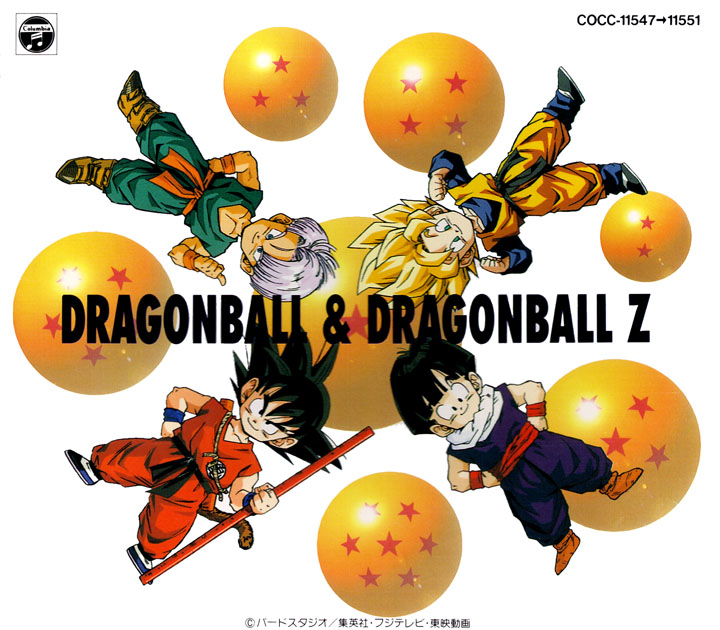Dragon Ball & Dragon Ball Z Daizenshuu 5-Disc Set (01 April 1994)

Kōzō Morishita Comment
By Toei Animation producer, Kōzō Morishita1
Regarding Dragon Ball Z, there were only about two and a half months between the serialization of the original manga and the broadcast of that story material in the animated series3. This is near simultaneous, even faster than the rhythm of publication of the collected volumes. As creators, this is really hard. That said, I think that this sense of treasuring the original work while it’s still fresh might be one of the reasons why the animated adaptation worked so well.
We always produced the anime with a constant straightforward approach. It’s a matter of knowing what the audience wants to see. Since in television we cannot just leisurely use a four-act structure4 like in theatrical films, we absolutely have to have a barrage of cool stuff one after the other, which is why I think it’s impossible to get bored with the series.
Kikuchi-san worked on many Toei series, but he really is a great technician, isn’t he? His style of musicianship isn’t merely straightforward; he can also turn a single melody into something with a suspenseful or soothing tone at will, all by just changing the instrument composition. Kikuchi-san mastered this technique at a very early stage, so couldn’t it therefore be said that he’s an outright authority? If we count merely the music from “Z”, he’s already composed about 400 different pieces, but if we also include Dragon Ball, we will get an absurdly high number. Precisely because he has that many pieces, he is able to freely use a variety of patterns from contemporary music, so it truly is amazing.
In Dragon Ball Z, almost all of the main theme songs are sung by Hironobu Kageyama-san. And if it’s Kageyama-san, then I can feel completely at ease, musically speaking. It was the same with Saint Seiya, another series I worked on. In the very beginning of “CHA-LA HEAD CHA-LA”, there’s a verse that goes “Breaking through the shining clouds (…)” that could not possibly be sung that way by someone with just your run-of-the-mill singing ability. And also with the new opening theme song, “WE GOTTA POWER”, I think there’s no one else besides Kageyama-san who could properly sing this song. Indeed, he’s so talented and lively that it’s perfect for starting out with a bang as soon as the clock reaches 7:00 p.m.5 (laughs)
The reason why Dragon Ball has become such a long-lasting series is because the original manga has an immense amount of plot twists. If not for that, people would have long given up. It’s all about having an appealing world and a colorful cast of characters. As one of the fans that fell in love with Akira Toriyama’s world, I’m eagerly awaiting for sensei to carry on drawing even more6, for there to be even more powerful characters, and for the Akira Toriyama world to grow even bigger. If we can have that, then we’ll also want to continue with the animated series. This CD set isn’t the end, so I would like Kikuchi-sensei and Kageyama-san to keep on working hard so that we can make a second volume. (laughs)
(24 December 1993, at the Toei Animation studios)
Kōzō Morishita Profile:
Born in Shizuoka Prefecture. Worked on the production of numerous Toei Animation series. When he was an assistant director, he worked on series such as Tiger Mask, Cutie Honey, UFO Robot Grendizer, Planetary Robot Danguard Ace, and Captain Future, and as such, he is part of a distinguished group who helped bring about an entire era of action anime at Toei.
He started working as a producer starting during the latter half of Saint Seiya, and then brought his own personal flavor to the latter half of Dragon Ball and to its sequel, Dragon Ball Z, which he was in charge of.
2 Keizō Shichijō is credited with “Planning” (企画) for Dragon Ball‘s entire run of episodes 1-153, with Kōzō Morishita then also receiving that credit for episodes 132-153. Learn more in our “Production Guide” here on Kanzenshuu.
3 For more on this subject, please check out the article entitled “The Inevitability of Filler” in DB30YEARS, the special magazine we at Kanzenshuu produced in 2014 to commemorate the series’ 30th anniversary.
4 Kishōtenketsu (起承転結) describes the structure and development of classic Chinese, Korean, and Japanese narratives. Instead of the typical three-act structure commonly seen in Western fiction, kishōtenketsu instead uses a four-act structure: introduction, development, turn, and conclusion.
5 Dragon Ball Z — like Dragon Ball before it and Dragon Ball GT after it — originally aired on Wednesday evenings at 7:00 p.m. in Japan.
6 The Dragon Ball manga would reach its final chapter on 23 May 1995, roughly 17 months after Morishita wrote down these words.